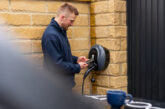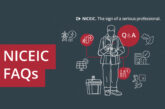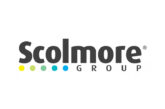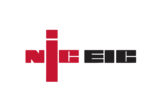
Are you asking manufacturers for product circularity ratings? The team at ROBUS explain more about why this is such an important consideration for lighting installers.
If aliens were to bend their ears towards Earth and hone in on the lighting industry (stick with us for a moment on this!), the word ‘circularity’ and its many variations would be picked up fast.
“The closed-loop system”, “exchangeability”, “cradle-to-cradle products”, “modular design” – all these commonly used phrases point towards the same sustainable strategy of circularity.
The aliens will think this is great news – humans don’t want to destroy the planet! – and, in many significant ways, it is. We’re all speaking the same language of sustainability; it’s front of mind across the lighting industry; we’re a community that shares common values. But there’s been something fundamentally lacking from much of this discussion – verification.
That’s why the TM66 Assured Product Verification Scheme was developed by the Chartered Institution of Building Services Engineers (CIBSE) and the Lighting Industry Association (LIA).
How do we identify, implement, and verify circularity?
In October 2021, CIBSE released the Technical Memorandum 66, or TM66 as it has come to be called.
This document serves as an in-depth guide aimed at helping specifiers and manufacturers in the lighting sector comprehend and implement the principles of the circular economy.
It has four key objectives:
• Promoting sustainable design
• Ensuring material traceability
• Encouraging repair and reuse
• Enabling responsible recycling.
Guidance is great, but verification is what sets the standard and that’s what the TM66 Assured Product Verification Scheme is all about.
This scheme adds an additional layer of credibility and verification to the already comprehensive TM66 toolkit. Significantly, it introduces a new metric: the TM66 circularity rating.
You can ask manufacturers for circularity ratings
Through engagement with the TM66 Assured Product Verification Scheme, lighting manufacturers can obtain independent verification of their circularity claims. This validation procedure ensures that the ratings offered by manufacturers for their lighting fixtures are accurate, unbiased, and standardised. This means you can now compare products from different manufacturers on a like-for-like basis.
How does TM66 Assured certification work?
Manufacturers wishing to submit products for certification are required to provide product details in specified formats. One such format is the Circular Economy Assessment Method (CEAM), which assesses the circular economy qualifications of lighting products across the supply chain.
In practice, the assessment is broken down into parts such as product design, manufacturing, materials, and ecosystem and, for each part, there are specific questions, examples, and evidence required to inform the overall scoring system.
Required documents for submitting to TM66 Assured are:
• Completed CEAM, consisting of 72 questions,
• Supporting evidence to validate information provided,
• All product instructions and product packaging,
• The complete product.
It helps to get guidance from the experts, which is why comprehensive training on conducting TM66 Assured assessments is available through the LIA.
TM66 Assured is voluntary, not mandatory
Indeed, TM66 is not mandatory which can sometimes prevent substantial uptake. However, many manufacturers are championing this assessment model. ROBUS recently submitted two products for verification – the GOLF surface fitting and SELEST floodlight.
Why these products?
SELEST meets sustainable design standards because it’s designed for longevity, with a high impact rating, a self-regulating valve to prevent moisture condensation and an exceptionally high efficacy of 123Lm/W – 162Lm/W.
GOLF has a modular design, which refers to a product design strategy that involves creating a complete product by assembling smaller, independent components. This approach promotes recycling and decreases landfill waste by making it easier to disassemble and reuse parts.
The results
Both GOLF and SELEST achieved a strong rating of 1.8 which is defined as showing definite/substantial progress towards circularity. Beyond the rating, the TM66 assessment process provides practical insights for implementing circularity into product development. ROBUS has incorporated these learnings into its new product development processes.
Keep an eye out for TM66
Assured logos TM66 Assured certification is valid for three years and can be showcased in various forms, such as being listed in the LIA database. Additionally, the LIA is distributing logos that vendors can display on their websites and attach to their products as a symbol of approval.
So, as you navigate the lighting industry’s evolving landscape, keep an eye out for these logos — they’re a beacon of trust and a testament to a commitment towards sustainable practices!
Browse the 2024 Robus Lighting catalogue online here
Read more of the latest industry technical articles here












